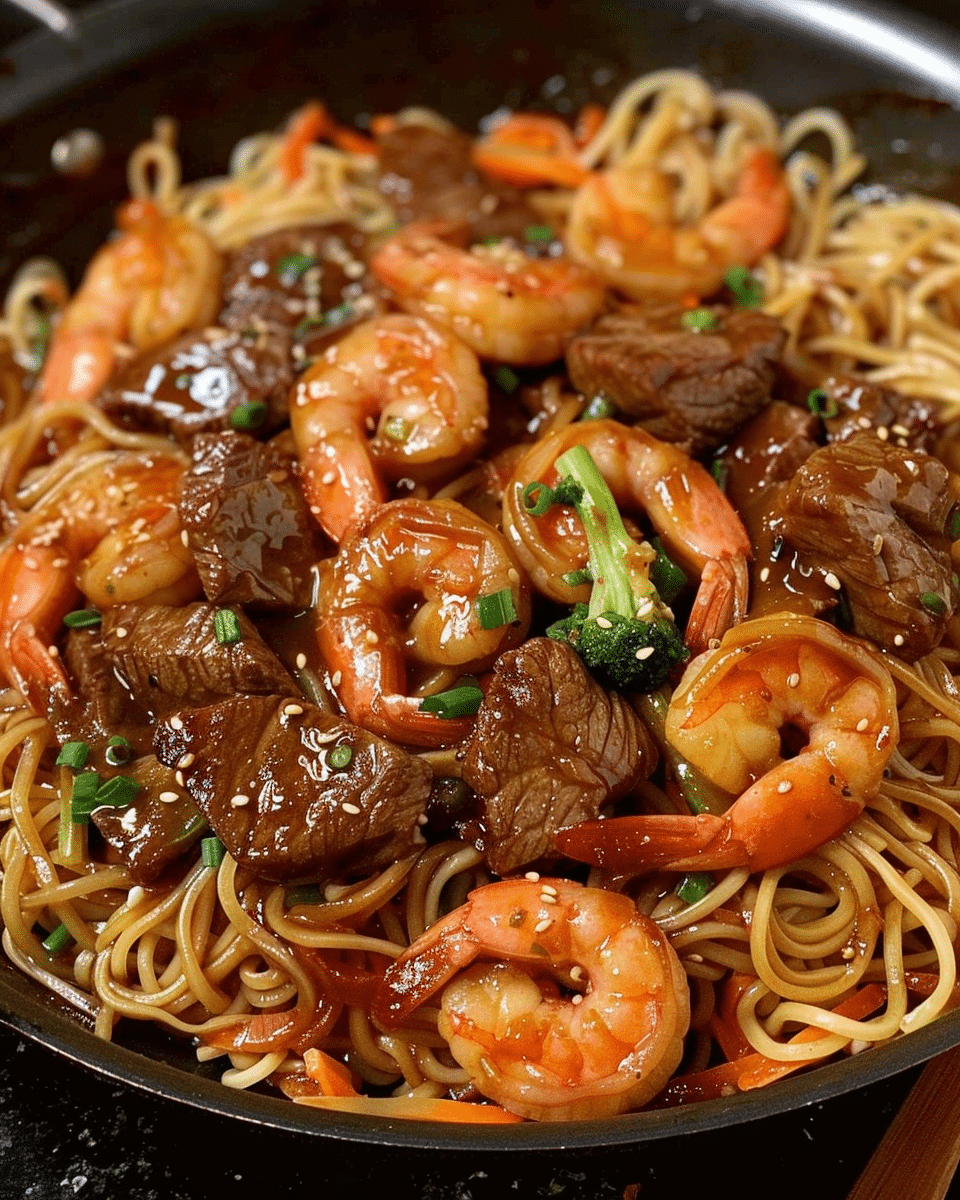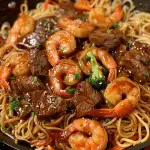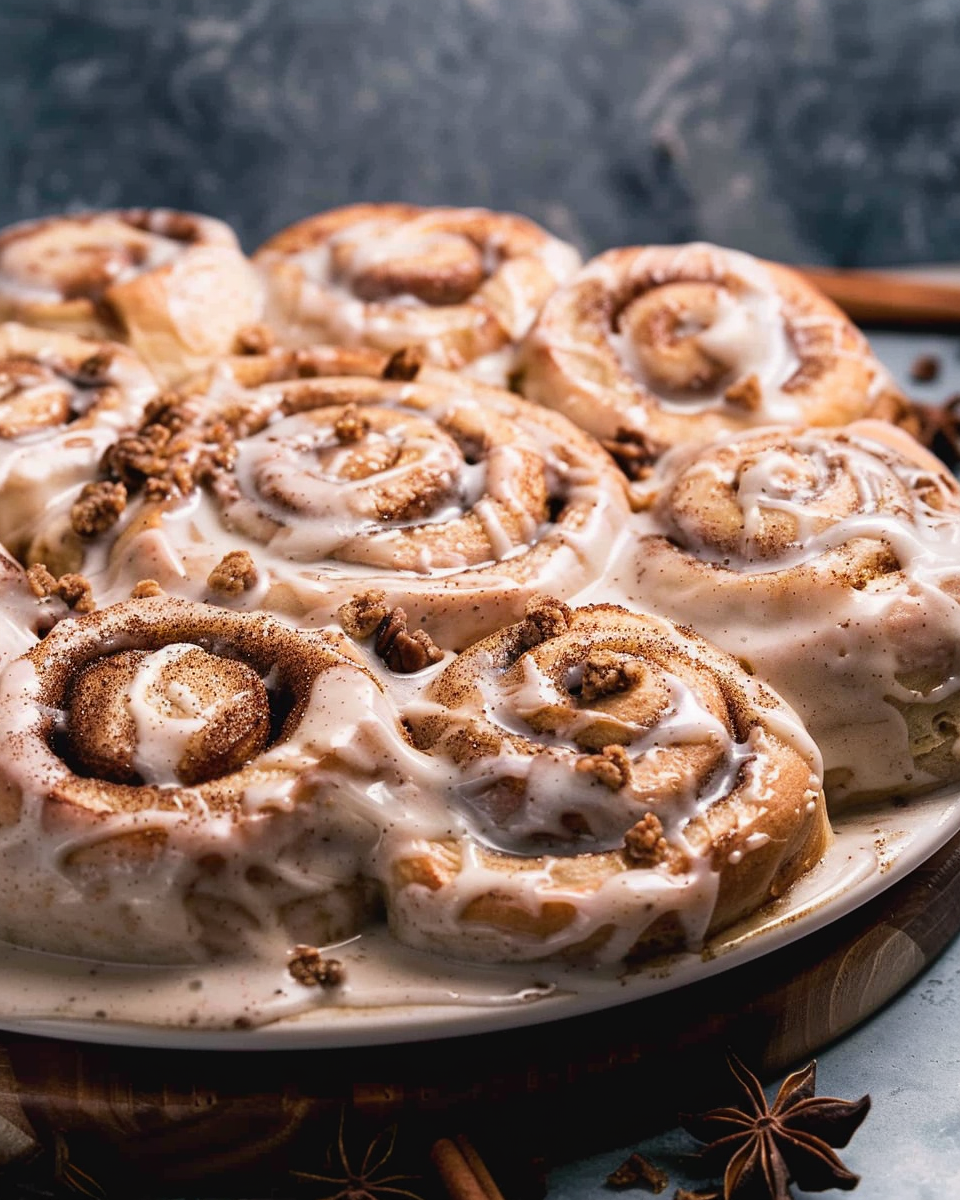Looking for a delicious, quick, and easy weeknight dinner? This Shrimp Teriyaki Steak Noodles recipe is just what you need! Combining tender udon noodles with succulent shrimp, juicy flank steak, and vibrant vegetables, all coated in a mouth-watering teriyaki sauce, this dish is a crowd-pleaser. Ready in just 30 minutes, it’s perfect for those busy evenings when you want something nutritious and satisfying without spending hours in the kitchen.
Ingredients:
8 ounces udon noodles
1 tablespoon vegetable oil
1/2 pound flank steak, thinly sliced
1/2 pound large shrimp, peeled and deveined
2 cups broccoli florets
1 red bell pepper, thinly sliced
3 green onions, chopped
1/4 cup teriyaki sauce
2 tablespoons soy sauce
1 tablespoon honey
2 cloves garlic, minced
1 teaspoon ginger, grated
Sesame seeds (optional)
Directions:
Cook the Udon Noodles: Begin by cooking the udon noodles according to the package instructions. Once cooked, drain and set aside.
Prepare the Steak: In a large skillet or wok, heat the vegetable oil over medium-high heat. Add the thinly sliced flank steak to the skillet and cook for 2-3 minutes, until browned. Remove from the skillet and set aside.
Cook the Shrimp: In the same skillet, add the shrimp and cook for 2-3 minutes, until pink and cooked through. Remove and set aside with the steak.
Stir-Fry the Vegetables: Add the broccoli florets and red bell pepper to the skillet. Cook for 4-5 minutes, until tender-crisp. Then, stir in the chopped green onions, minced garlic, and grated ginger. Cook for an additional 1-2 minutes, until fragrant.
Combine Ingredients: In a small bowl, whisk together the teriyaki sauce, soy sauce, and honey. Return the steak and shrimp to the skillet. Pour the sauce over the top and stir to combine.
Add Noodles and Serve: Add the cooked udon noodles to the skillet and toss everything together until well coated and heated through. Garnish with sesame seeds if desired. Serve immediately.
Serving Tips:
Presentation Matters: Serve your Shrimp Teriyaki Steak Noodles in a large, shallow bowl or on a platter. This not only makes it look appealing but also allows everyone to easily help themselves.
Garnish for Extra Flavor: Enhance the visual appeal and taste by garnishing with sesame seeds, chopped cilantro, or a few slices of fresh red chili for a spicy kick.
Pair with a Side Dish: Complement the noodles with a simple side salad, steamed edamame, or a miso soup to round out the meal.
Serve Hot: Ensure the dish is served immediately after cooking to enjoy the noodles at their best texture and the flavors at their peak.
Storage Tips:
Cool Before Storing: Allow the dish to cool completely before transferring it to storage containers. This prevents condensation and keeps the noodles from becoming soggy.
Airtight Containers: Store leftovers in airtight containers to maintain freshness and prevent the dish from absorbing other odors in the fridge.
Refrigeration: Place the containers in the refrigerator. The dish can be stored for up to 3 days.
Reheating: Reheat the noodles in a skillet over medium heat, adding a splash of water or a bit more teriyaki sauce to prevent dryness. Stir frequently to ensure even heating.
Microwave Option: You can also reheat in the microwave. Place the noodles in a microwave-safe dish, cover with a microwave-safe lid or plastic wrap with a corner left open to vent, and heat in 1-minute increments, stirring in between until heated through.
Freezing Tips:
Freeze for Longer Storage: If you want to store the dish for a longer period, you can freeze it. Place the completely cooled noodles in a freezer-safe container or heavy-duty freezer bags.
Label and Date: Always label the containers with the date to keep track of storage time. The noodles can be frozen for up to 2 months.
Thawing: To thaw, move the container from the freezer to the refrigerator and let it defrost overnight.
Reheating After Freezing: Reheat the thawed noodles in a skillet over medium heat, following the same method as refrigerated leftovers. Avoid reheating frozen noodles in the microwave directly, as this can result in uneven heating and texture changes.
Related Recipes:










